Why do I need the flipchart?
The Scrum Flow is often used to give Scrum beginners an overview and to address the roles, events and artifacts in the Scrum vocabulary for the first time. In this way, it can also be shown very briefly that even with this type of agile working, not everything is simply "in motion" or work is done arbitrarily on demand - but is very clearly structured.
What can I say about the flipchart?
The Scrum flow is described here starting from the PDCA cycle from Deming (Plan-Do-Check&Act). Many project and quality managers are familiar with the PDCA cycle from traditional project work as a problem-solving process. This allows "old hands" to build on familiar knowledge and may make access to Scrum easier. The acronym PDCA comes from the English and stands for:
Plan (plan = P):
- Identification of the specific problem
- Analysis of the current situation
Execute (do = D):
- Implementation of the measures described to solve the problem
Check (check = C):
- Survey and evaluation of the results
- Checking the data obtained to determine whether the objectives of the planning phase have been achieved
Improve (act = A):
- Reflection on the process
The four phases are therefore to be understood as a continuous process of improvement. The core elements of Scrum are integrated into this PDCA cycle step by step. First, the special feature of the relatively short sprint length is explained. Starting with the vision, we explain how the artifacts are conceived and interact in this flow:
- Product backlog as a list of everything that is required for the product.
- Sprint backlog for entries from the product backlog that have been selected for the sprint.
- Sprint target as a definition of the benefit delivered at the end of the sprint.
- Increment as the sum of the backlog items completed in the sprint.
- Definition of Done as a common understanding of when an increment is complete.
Events are another structuring element:
- Planning 1: the part of planning in which entries from the product backlog are selected for the sprint.
- Planning 2: the part of the planning in which details (tasks) are planned for the selected entries.
- Daily ScrumDaily planning and exchange.
- RefinementMaintenance of the product backlog.
- ReviewCheck and Act on the product.
- RetrospectiveCheck and Act on the mode of operation.
An explanation of the roles and initial rough ideas on how to fill them concludes the introduction:
- Product Owner ... the one who is responsible for the product and the ROI.
- Scrum Master ... the one that ensures a smooth product development process.
- Development team ... the one that works in a self-organized way and delivers the increment.
What does the flipchart finally look like?
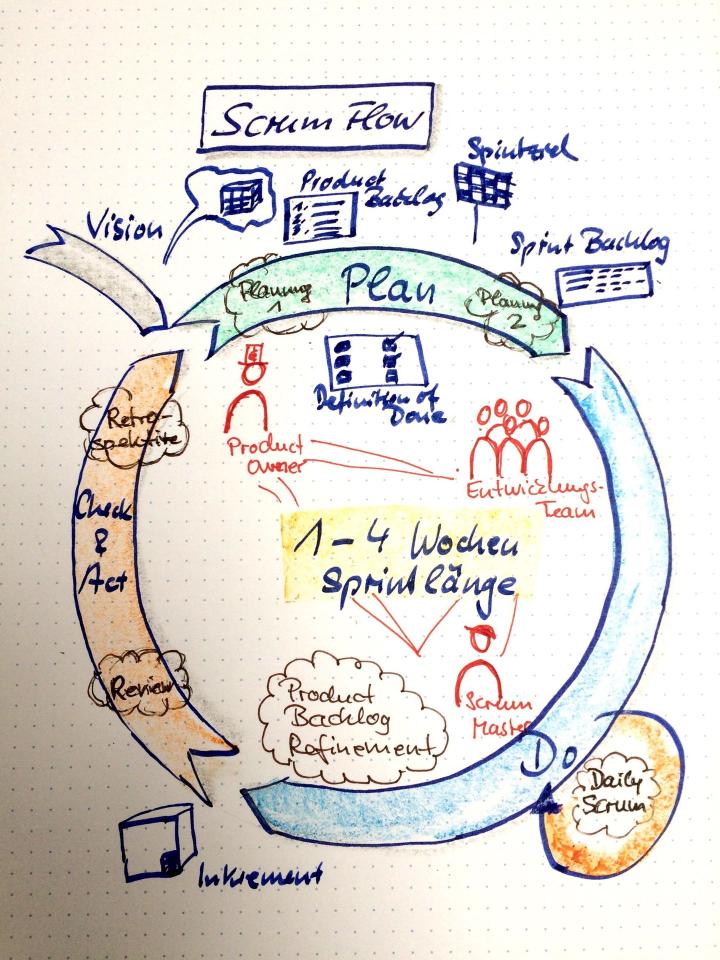
How can I set up the flipchart step by step?
Step 1
PDCA-Zyklus auf die drei Phasen verteilen. Auf den folgenden Seiten wird dargestellt, wie der PDCA-Zyklus sukzessive um die Scrum Elemente ergänzt wird.
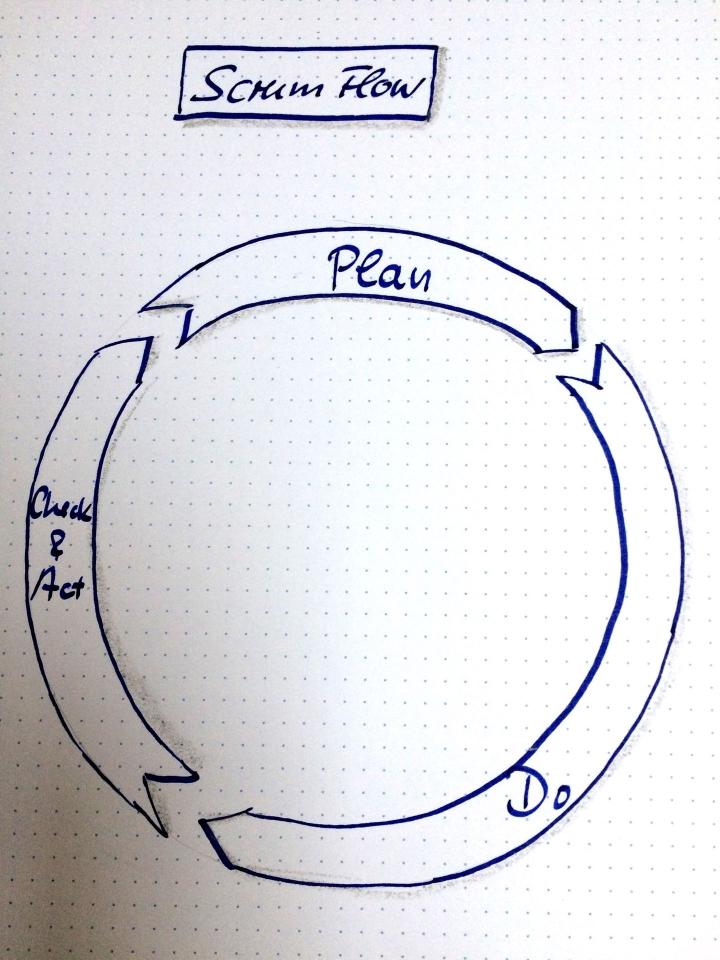
Step 2
Die Sprintlänge von 1 bis 4 Wochen wird mit dem PDCA-Zyklus verknüpft. Vorteile wie schnelle Rückmeldung vom Kunden im Gegensatz zu früheren Projekten mit langer Lieferzeit und vielen erforderlichen Changes am Ende usw. können bei der Erläuterung schon angedeutet werden.
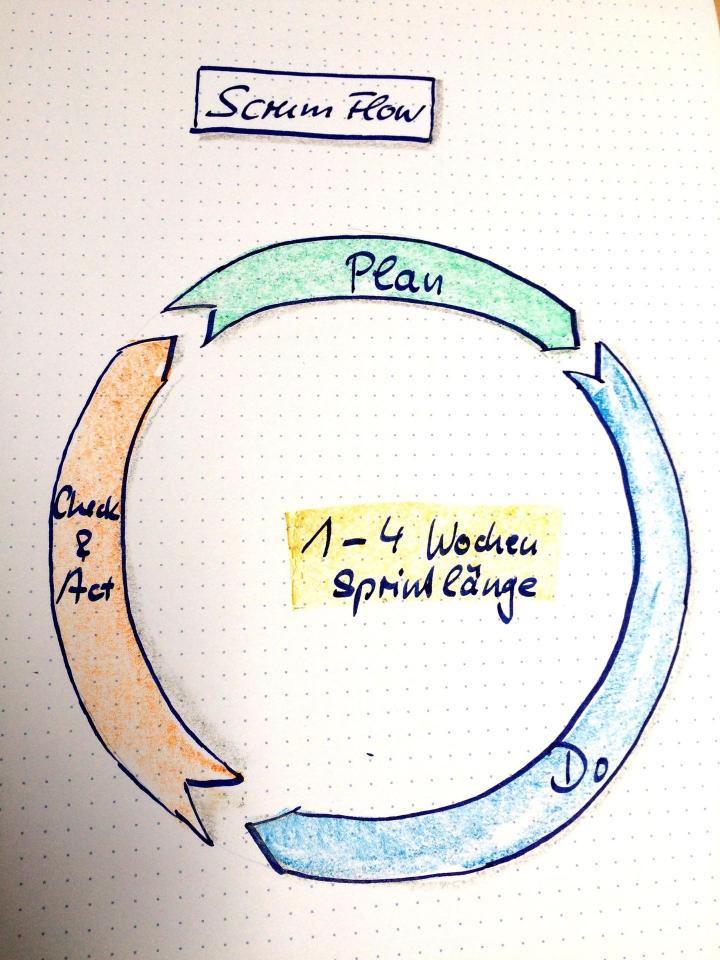
Step 3
Wie funktioniert nun Scrum? Agil ist ja nicht ohne Struktur. Beginnen wir mit den Artefakten. Vision, Product Backlog, Sprint Backlog, Sprint Ziel, Inkrement und Definition of Done werden erläutern und in die Abbildung integriert.
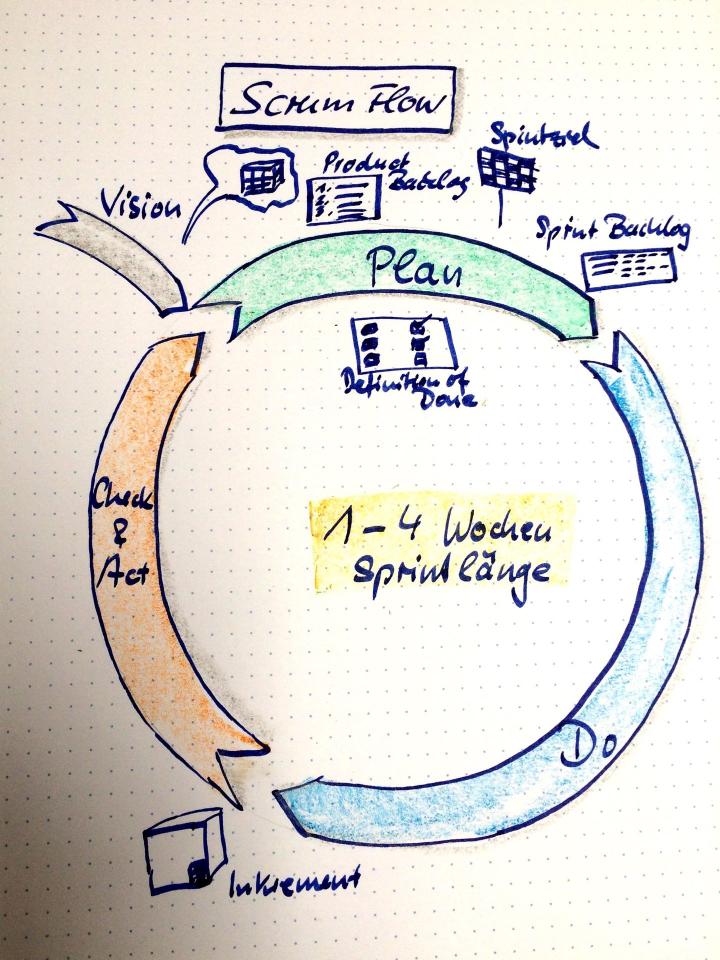
Step 4
Die Events Planung 1, Planung 2, Daily Scrum, Refinement, Review und Retrospektive werden in das Bild integriert und in groben Zügen erklärt. Wenn ich die Gefahr der Überforderung bei den Zuhörern sehe vereinfache ich das Bild auch und verzichte zunächst auf die Aufteilung der Planung in 1 und 2. Es geht ja hier nur um einen Überblick. Für ein einsatzbereites Verständnis von Scrum zur Anwendung werden ohnehin alle Elemente – auch die Events – vertiefend angesprochen.
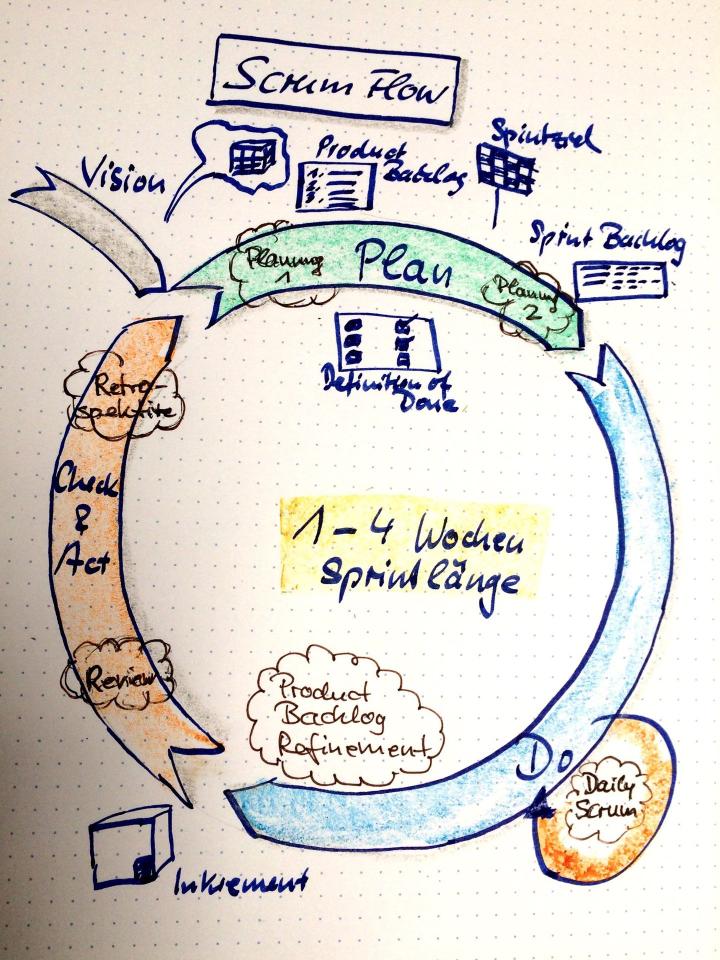
Step 5
Die Rollen Scrum Master, Product Owner und das Entwicklungsteam werden ergänzt. Hier ist es ein wenig Einstellungssache, wo genau im Bild die einzelnen Rollen positioniert werden, da ja jede Rolle kontinuierlich im Flow eingebunden ist. Den PO zeichne ich gerne in die Gegend um den Sprintwechsel – so ist er nahe an Vision, Product Backlog und Review / Retrospektive.


Comments
Write a comment